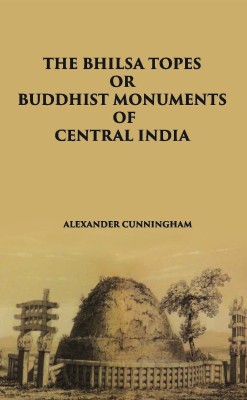THE BHILSA TOPES OR BUDDHIST MONUMENTS OF CENTRAL INDIA(Hardcover, ALEXANDER CUNNINGHAM)
Quick Overview
Product Price Comparison
About the book:-The author reveals that there are several Buddhist remains and monuments within about 20-km radius of Vidisha in Madhya Pradesh. Of these, Sanchi is the most famous and best known primarily because of the magnificence of the monuments, notwithstanding the fact that there are several other Buddhist monuments in the area which are no less important. Perhaps it could be due to their rather dilapidated condition and location in remote, out-of-the way spots. These monuments are located at Sonari, Satdhara, Murelkhurd and Bawalia-Hakeemkhedi, all in Raisen District of Madhya Pradesh. He has described these monuments in the present volume, The Bhilsa Topes, which was originally published in 1854. This work is the first serious attempt to trace Buddhist history through its architectural remains. It also provides a historical account of the rise, progress and decline of Buddhism; The life and faith of Sakya; The synods; Buddhist schisms; The reign of Asoka; The symbols of Buddha, Dharma and Sangha and many other important facets of Buddhism. This reprint of the Bhilsa Topes is being presented in to a new format while retaining the original text and illustrations. Another additional feature of the present volume are some recent photographs of monuments described by Cunningham. Long out of print, this seminal work remains most useful for researchers. The book contains the most important 33 illustrations to make it more interesting. About the Author :-Major General Sir Alexander Cunningham KCIE CSI (1814 ŌĆō 1893) was a British Army engineer with the Bengal Engineer Group who later took an interest in the history and archaeology of India. In 1861, he was appointed to the newly created position of archaeological surveyor to the government of India; and he founded and organised what later became the Archaeological Survey of India. He wrote numerous books and monographs and made extensive collections of artefacts. Some of his collections were lost, but most of the g


